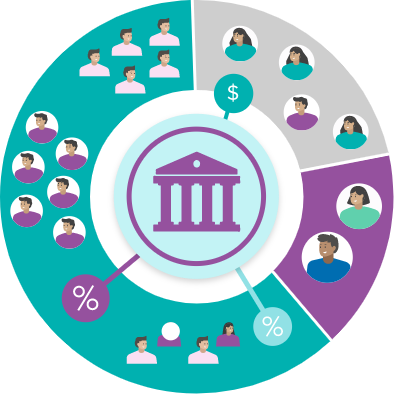
Corporate banking customers not only want more personalization but also expect greater opportunities for self-service from their banks. Modern banking offers aim to give customers what they want, and deliver relationship-based, value-driven engagement. Banks can offer 1 or a combination of 3 kinds of offers.
Mass market offers: These are pre-approved, pre-defined bundles of services that are rolled out to a customer segment. These offers are basic but comprehensive and can help drive customer loyalty and retention, increase share of wallet, cross and up-sell products, and drive sales of dormant products. Banks across the world have been deploying mass market offers successfully for a while now. For example, a leading bank in Africa offered a cash back campaign to increase transaction values at the point of sales, increase sale of the bank’s branded credit cards and establish itself as a preferred acquirer of choice at merchant locations. The campaign was highly successful, and the bank achieved all their objectives. Another Asian bank offered special family packages for young families to drive new customer acquisitions. They saw their deposits increase almost four times in a short span of time.
Over the table offers: These are personalized versions of mass market offers that are tailor made to meet individual customer requirements. Modern customers in the corporate banking segment expect relationship-based engagement models and are eager to self-curate packages with hand-picked services and negotiated rates that make sense for them. Banks now offer custom-made offers that the customer themselves can choose based on their relationship with the bank and some mutually agreed upon conditions. This customization can be done by customers directly on a self-service portal or done along with a relationship manager across the table. The curated bundles are then sent for approval, after which they are synchronized with the pricing and billing systems for implementation. The customer will pay only for the services they need at competitive rates that they negotiated and approved. For their part, the bank secures the customers business based on which the tailored offer was made. This kind of offer needs to be monitored and the bank must have effective systems and controls in place to track the offer, provide timely alerts to both parties, and manage hyper-personalized pricing. The process also must be history logged and all data points must be captured and logged in a transparent manner so the customer can easily view them.
Banks today require over the table tailor-made offers to meet customer demand for hyper personalized and relationship-based engagement. For example, a large bank specializing in corporate payments and cash management in Europe offers personalized offers with pick and choose services from their global cash management services hierarchy. This offer includes services spanning payments, collections, and account management. The customer can build their own personalized package and get into a contractual agreement with the bank for it. A large Indian bank utilized data effectively to understand customer payment patterns on loan or interest payments. Based on this data, they rolled out competitive and personalized interest rates to the customer who benefitted from lower rates.
Over-the-top offers: Neither banks nor customers exist in a vacuum. There are external events, and trends that can impact and even disrupt the ongoing banking relationship and make it difficult for customers to adhere to agreements or contracts. Under such extenuating circumstances, banks can roll out over-the-top offers or a super offer that sits on top of the personalized one. It is the highest priority of the price resolution hierarchy and is a tool to cover the bulk of banking customers. These offers are only provisioned by the bank and typically involve waiving off non-usage charges for a short period. Over the last two years, we have seen several over-the-top offers as the world grappled with the COVID 19 pandemic and lives and livelihoods came under threat. One bank waived off the recurring charges on services and facilities for all their customers, including the ones enjoying personalized rates during the pandemic. Another bank took notice of the devastating bush fires in their region and decided to help people in distress by waiving off or substantially reducing some charges as an over-the-top offer. The goodwill and consequently loyalty won from customers as a result of such offers is immense and will stand the bank in good stead in the long run.
From the description of each kind of offer, it is evident that banks need advanced technology solutions to implement, manage and monitor offers. Banks usually pre-set the terms and limits of the offer themselves, but managing multiple customizations, approvals and monitoring contracts and agreements without a robust technology platform can be a significant challenge. Specifically, the solution must be able to manage:


